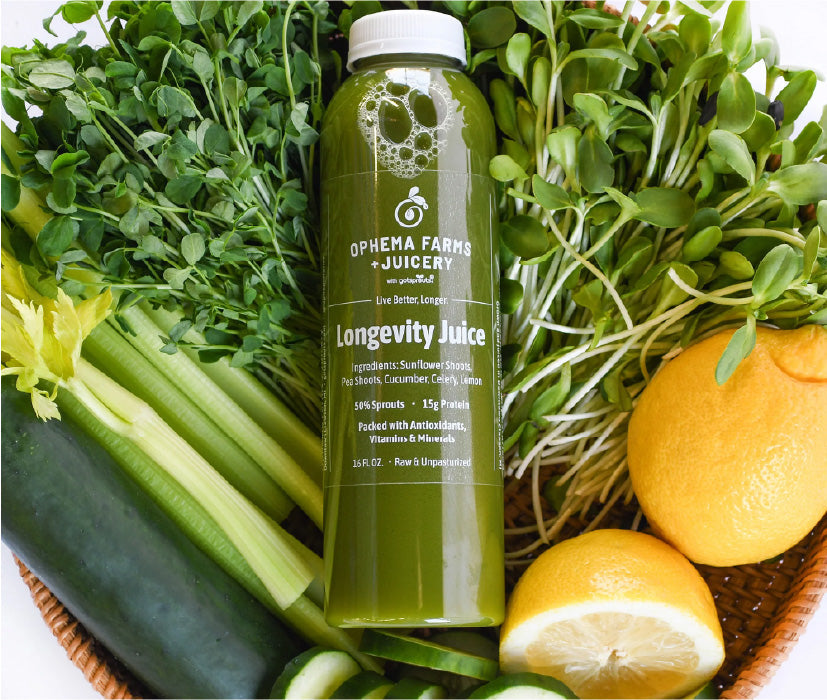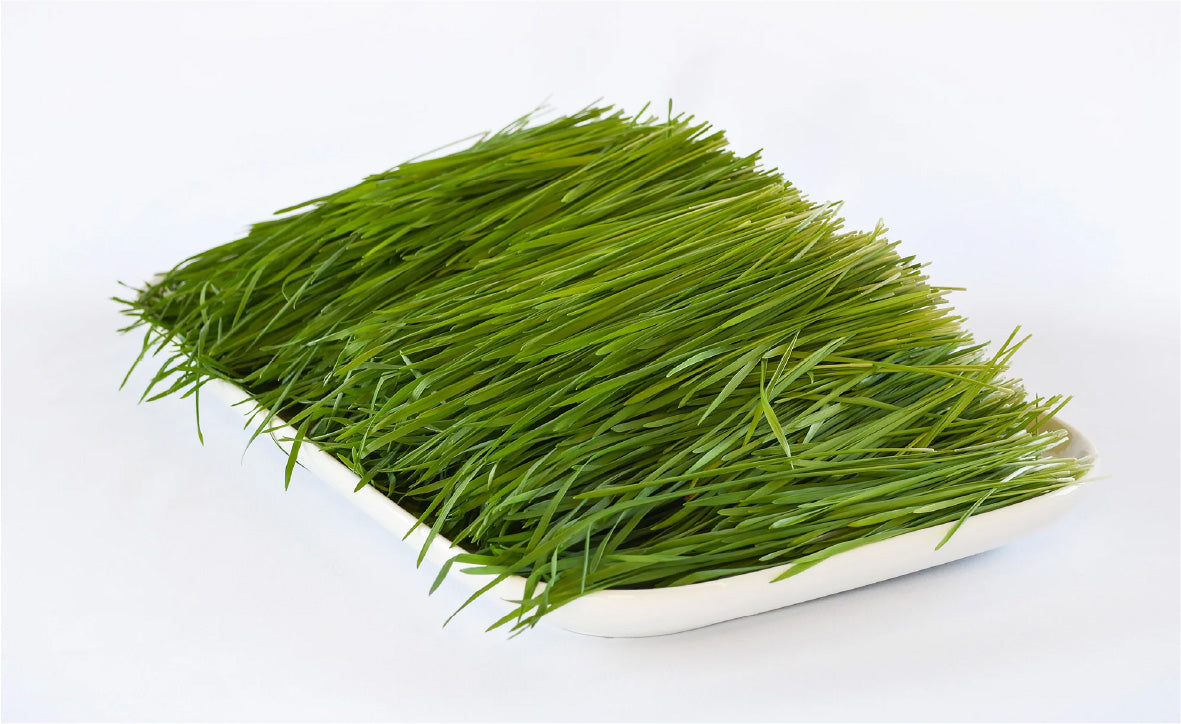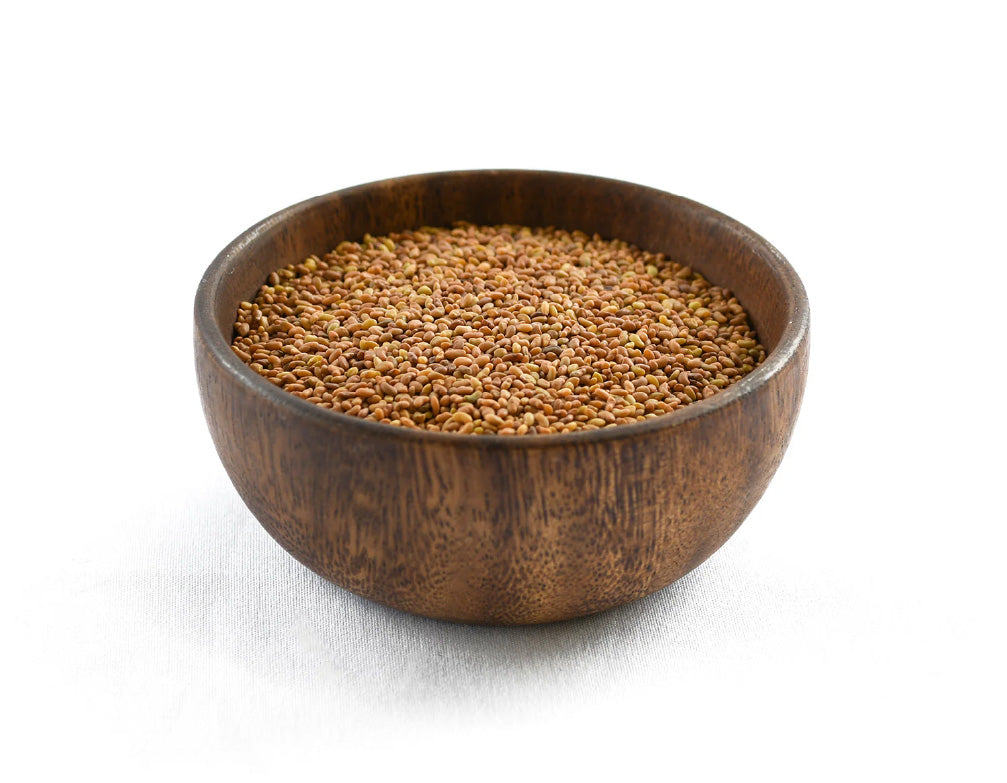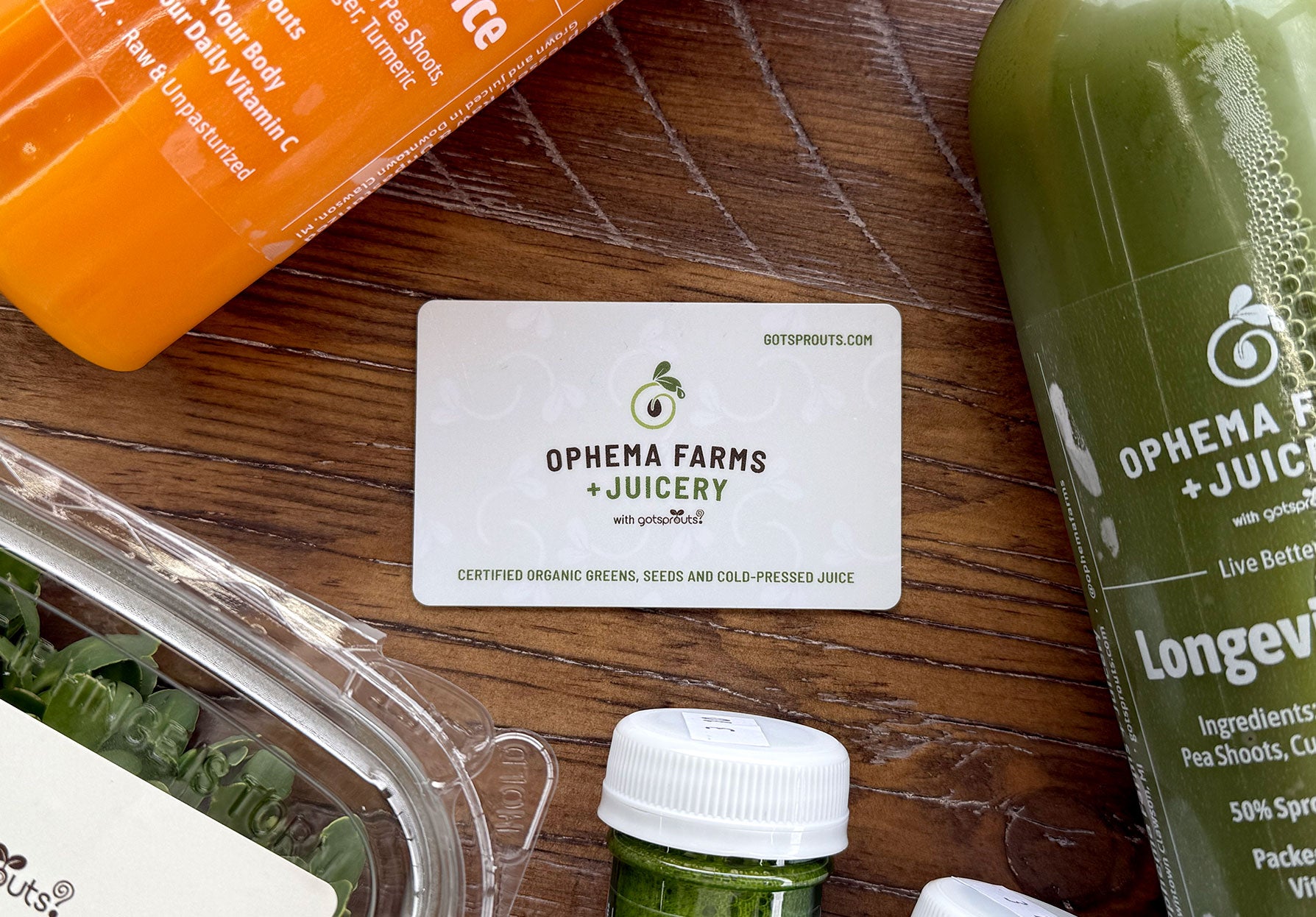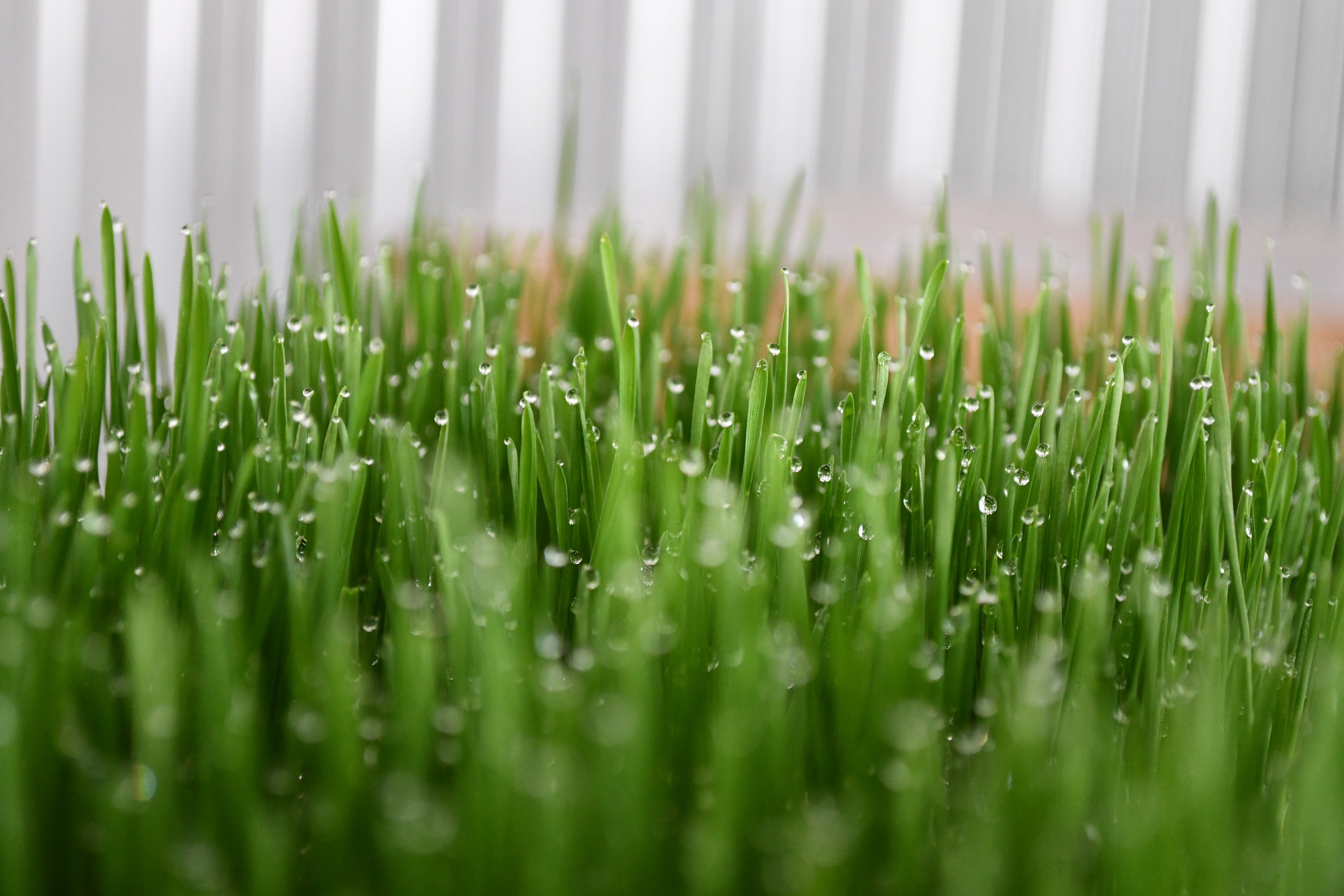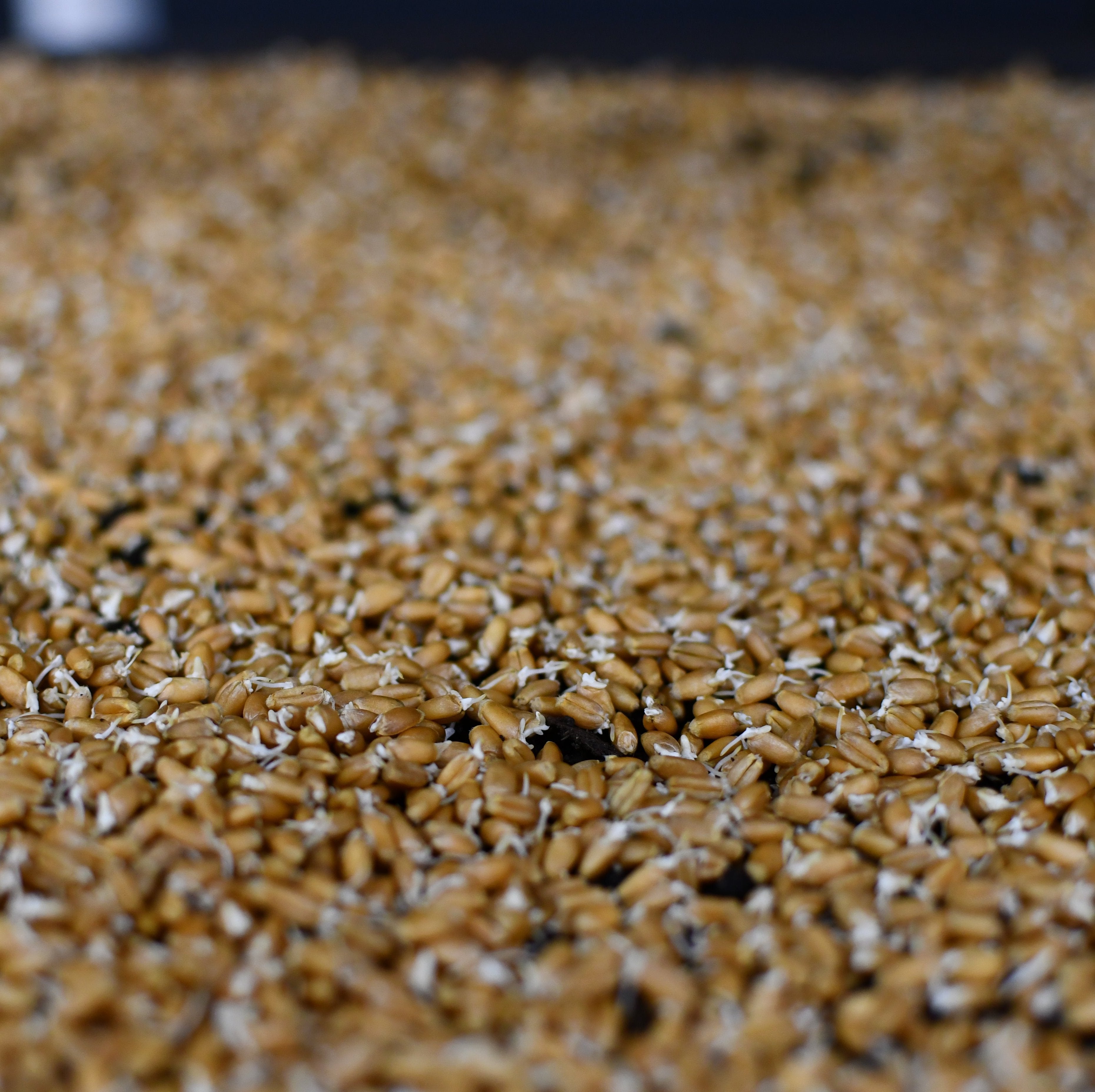
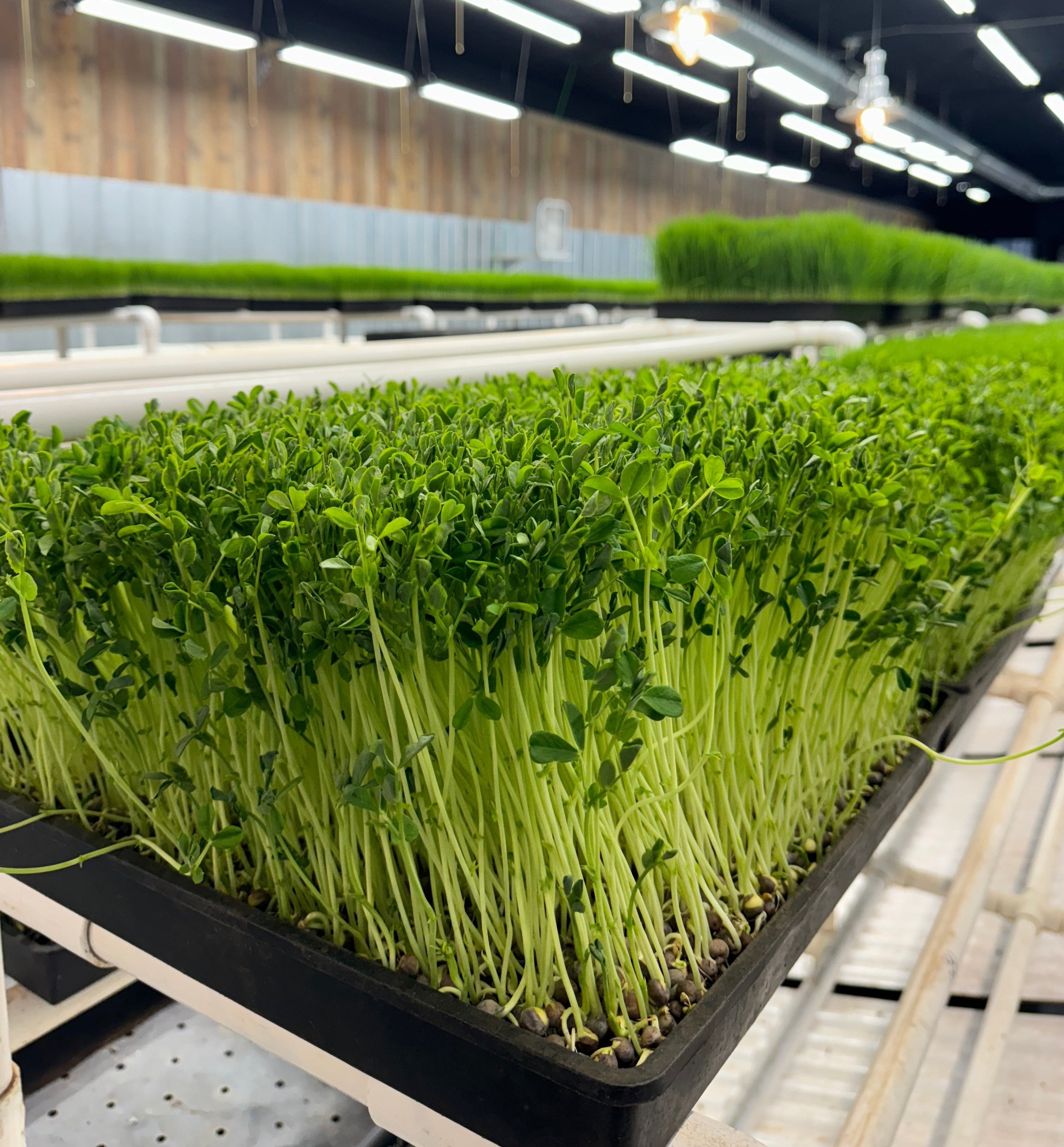
For Us, It's About Quality + Freshness
- Certified organic seed, soil, greens
- Highest standards of growing processes
- Providing quality, local, fresh greens to our community
- Our mission is to help you Live Better, Longer by providing products with all the essential nutrients your body needs.
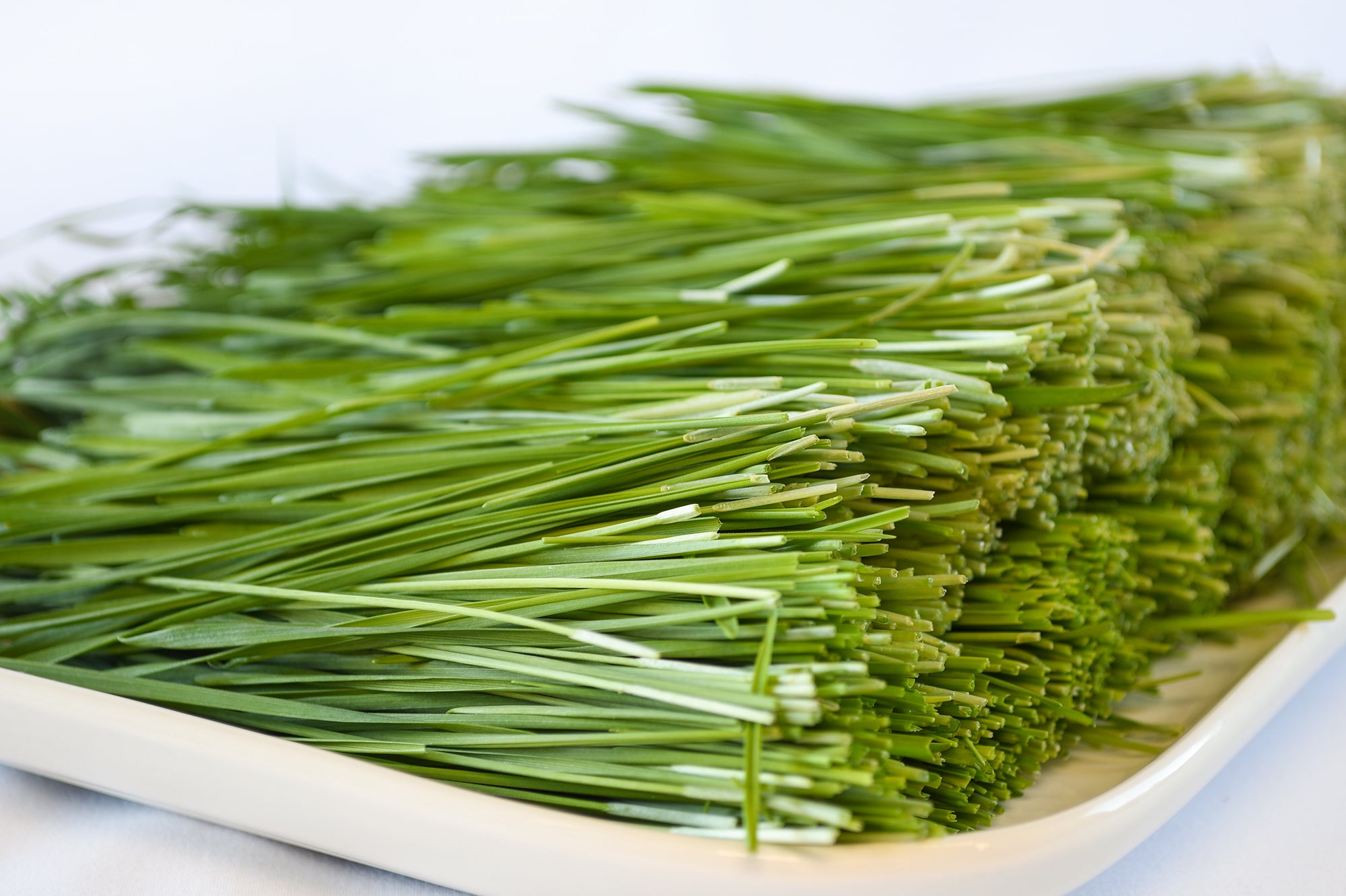
The Power of Wheatgrass.
Nutrient-Rich: Wheatgrass contains nearly every single element your body needs to perform at its highest level. The nutrients are bioavailable so your body actually absorbs them.
Detoxification: Wheatgrass aids in detoxifying the body by helping to remove toxins and heavy metals, promoting a healthier liver and overall well-being.
Alkalizing Properties: It has an alkalizing effect on the body, which helps balance pH levels and reduce acidity, benefiting digestion and overall health.
Immune Support: The immune-boosting properties of wheatgrass enhance your body's ability to fight off infections and illnesses, thanks to its high nutrient content.
Energy and Vitality: You will see increased energy levels and a sense of vitality after incorporating wheatgrass into your diet.
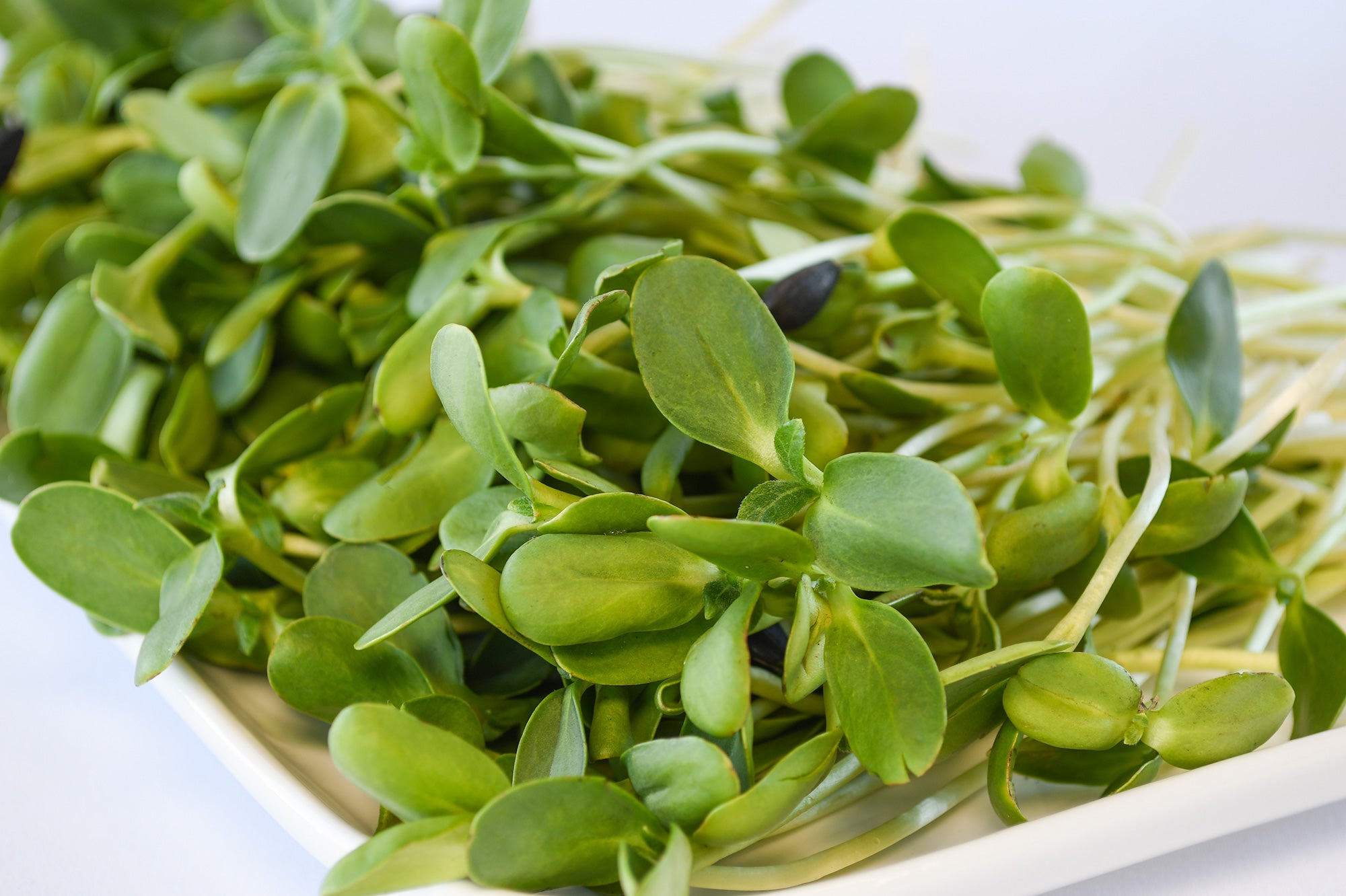
Sprouted Greens
To start, the nutritional content, enzymic activity, flavonoids, polyphenols, and other antioxidants are at their peak when they are sprouted for 7-9 days, before their true leaves appear. Each sprout has the nutritional force to support an entire plant.
Some Benefits:
- Increase white blood cell counts – which increases immunity and help the body through treatments.
- Its complex protein is converted into simple amino acids, which essentially means that it is "predigested".
- Vitamin production is increased three to twelve times more.
- Minerals are chelated, a natural state where they are chemically bonded to amino acids and easily assimilated by the body.
- They have delicate cell walls so they can release nourishment easily.
- They contain highly active antioxidants that prevent DNA destruction and the effects of aging.
- This allows the body to direct all of this energy and nutrition toward cleansing, regulating and building the immune system as well as creating healthy cells.
In addition, which we view as more important – is that it helps your body create Nitric Oxide – whose sole job it is to oxygenate your
blood, open up your blood vessels and capillaries, and allows oxygen and nutrients to flood into your cells to initiate healing, cleansing and vibrancy.

Benefits of Juicing
There are too many benefits to list - but we'll do our best!
- It's the most effective way to get maximum nutrients into your body.
- There is 3-5 pounds of produce in each bottle, and you're getting the nutrients straight into your system.
- Bioavailability - your body can easily absorb and put those nutrients to work immediately.
- It's easier on your digestive system, allowing your body to take a break from the heavy workload.
- It's delicious! It tastes great, and it's an enjoyable way to get the nutrients your body needs.
- Low Sugar - the majority of our juices have less than a gram of sugar - great to control your glycemic index.
- It will help you Live Longer, Better.

Join A Class
Want to learn how to juice? Understand the benefits? Check out our options here!


